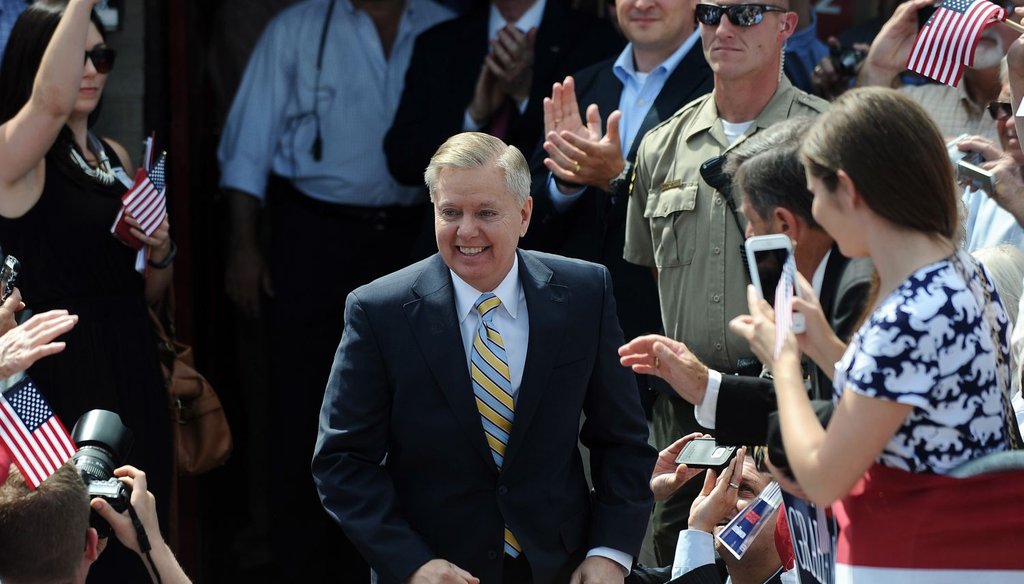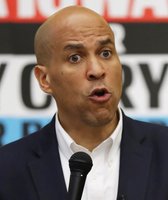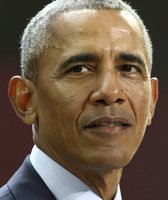Get PolitiFact in your inbox.

U.S. Sen. Lindsey Graham announces his bid for the presidency on June 1, 2015, in Central, S.C. (AP Photo)
U.S. Sen. Lindsey Graham, R-S.C., is joining the growing 2016 Republican presidential field to talk about his hawkish views on foreign policy. In his candidacy announcement, he advocated for an aggressive stance in the Middle East to combat the Islamic State, stressing the importance of taking "the fight to them" and "building lines of defense over there so they can’t come here."
In the past seven years we have put Graham on the Truth-O-Meter 11 times. His record includes two Trues, two Mostly Trues, four Half Trues, two Mostly Falses, and one False.
Here are some highlights from our past rulings on Graham. Our fact-checks have focused on topics such as the economy, the budget and the U.S. Supreme Court.
In March of this year, Graham stated, "If you took every penny of the (richest) 1 percent, including their dog, you wouldn’t even begin to balance the budget." Though he may have meant to refer specifically to income taxes, he left room for other plausible interpretations, such as total wealth and total income. We found that if "every penny" of wealth or income was taken from "richest 1 percent," the amount would far exceed the amount needed to balance the national budget. Graham did not single out income taxes of the richest 1 percent, and his phrasing allowed for three different interpretations (two of which proved to be false). For this reason, Politifact New Hampshire rated this claim Mostly False.
Graham has also weighed in on the labor participation rate, claiming that as of this past March, it "is at an all-time low." The rate is at its lowest level in 37 years. However, his statement was not an entirely accurate comparison, given major social differences in the country’s workforce that make it difficult to compare labor participation rates today to those 50 years ago. We rated it Mostly False because he ignored critical facts that would have given a different impression.
In 2010, Graham criticized one the provisions in the package of "fixes" passed by Congress and signed by President Barack Obama along with the health care law. This provision eliminated government subsidies to private lenders and expanded federal lending to students. Graham stated that "the average student will be spending $1,700 to $1,800 more during the life of their loan because of this surcharge." The policy experts we consulted stated that interest rates for students loans would remain unchanged by the bill, and the "surcharge" he referred to was nonexistent. This claim was rated False.
Graham is also an advocate for a return to deference to a president’s Supreme Court nominees. In 2009, during a Supreme Court nomination hearing for now-Justice Sonia Sotomayor, Graham stated, "there was a time when someone like (Antonin) Scalia and (Ruth) Ginsburg got 95-plus votes." Graham’s point was that historically, nominees were once confirmed by large margins. He urged deference in supporting Obama’s nominee. We found his statement to be True.
Graham, a member of the Senate Judiciary Committee, was consistent in his call for deference with the more recent nomination of Justice Elena Kagan, voting in support of Kagan on August 5, 2010.
Our Sources
See individual fact-checks.

































